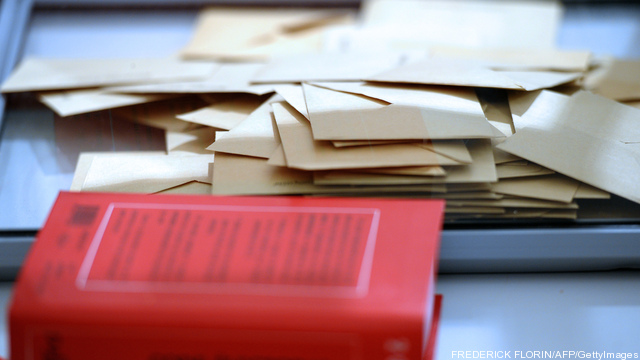
Large swaths of voters don’t know that oil is a fossil fuel and can’t tell the difference between a solar panel and a skylight.
But just setting them straight about the facts isn’t enough to produce an electorate that will arrive at the ballot box with a clear grasp of energy issues. If it were, the vast amount of information circulated about energy would sink in, and we’d all be experts.
“What doesn’t work is a pedantic lecture,” said Will Friedman, president of Public Agenda, a nonpartisan research firm in Manhattan, that focuses on educating voters about energy and other public policy issues.
So what does it take to prepare voters for the onslaught of contradictory information and propaganda that comes with an election – especially this year’s where the opposing camps are loud, certain and at odds about energy policy.
Public Agenda advocates a ‘learning curve’ approach, modeled after the work of its co-founder, social scientist Daniel Yankelovich. The theory is that just teaching voters facts about energy isn’t enough. It’s easy to memorize information; what’s tough is overcoming our inclination to engage in wishful thinking or denial. The human tendency is to avoid admitting that “Drill-Baby-Drill” or “Go Green” come with drawbacks.
Doing away with fairy tales and the scale of the challenge, on page two.
In short, Public Agenda hopes to do away with the fairy tales; to dissuade people from believing in the silver bullet – but not by advocating any particular energy agenda. Instead the organization tries to present voters with the pros and cons of all sides, so that they can “wrap their heads around the fact that there are going to be trade-offs, regardless of what path we choose through our most critical and divisive public issues,” said Allison Rizzolo, a co-author of “Energy: A Citizens Solution Guide,” a voter information piece that describes those trade-offs.
Public Agenda uses the term ‘learning curve’ to make clear that it is hard work, a climb, to reach an honest understanding. Yankelovich has identified three stages of the learning curve: 1) Consciousness-raising where the public becomes aware of the problems; 2) Confronting wishful thinking and facing up to sacrifices; 3) Resolution and support for change.
The American public has advanced along the consciousness-raising phase, but is just beginning the far tougher task of confronting wishful thinking, according to another Public Agenda report, Energy Learning Curve.
Crowd-sourcing Your Energy Policy Views
To get beyond wishful thinking, voters need to spend a good amount of time wrestling with the issues. Public Agenda recommends not only reading its citizens guide, but also discussing the points with friends, finding out what neighbors think, and not hesitating to debate with those who hold opposite views. Too often we are “just reading and interacting with the people who agree with our viewpoint,” said Rizzolo.
Ultimately, it is not that voters hold a particular energy policy dear. What they seek is a stance that supports their values. “Ideological arguments tend to be a straw man,” said Rizzolo. Voters may say they support a policy that encourages fossil fuels, but what they really mean is that they want America to be secure. Or they may call themselves pro-renewable, but their real concern is leaving behind a planet that is liveable and hospitable for their children.
“People need to go into the polls being able to look at where Romney stands, look at where Obama stands, look at where some other third party candidate stands, and say, ‘I understand what the trade-offs will be. Is this the platform that I actually endorse?'” she said. “Hopefully, and it is an ambitious hope, that instead of automatically voting along party lines, they’ll be a little more thoughtful and choose a candidate that reflects their values.”
Public Agenda says most of us fall into one of four broad groups when it comes to energy issues: the Anxious (40 percent), the Greens (24 percent), the Disengaged (19 percent) and the Climate Change Doubters (17 percent) – and all four groups face a steep uphill climb to truly understand energy’s trade-offs.
Some policy decisions can safely be left to the professionals: experts who spend their lives examining various issues – but energy isn’t one of them, according to Yankelovich. So Public Agenda has chosen the topic as one of a handful it is devoting attention to this election year.
But it’s one thing to provide accurate and unbiased information to voters; it’s another to get them to believe you. Today people are besieged by energy messages, they are suspicious, and it’s not easy getting through all the noise, points out Patricia Stanton, senior vice president of policy & advocacy at Massachusetts-based Conservation Services Group, which has been educating homeowners, businesses and policymakers about energy efficiency for almost three decades.
